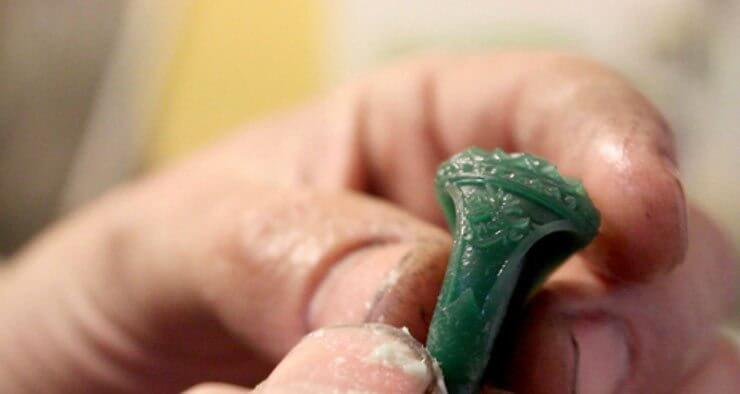
At MKM Jewelry, one of the methods we use to create jewelry is called lost wax investment casting. Regarded as one of the oldest manufacturing processes, archeologists have found lost wax casting was used for jewelry making and sculpting created dating back up to 5,000 years.
Due to its versatility and simplicity, lost wax investment casting has effortlessly adapted to modern technology. Depending on the talent of the jewelry manufacturer and the quality of the wax, mold, and metal, pieces can be extremely intricate and delicate.
Given the wide range of techniques used to create wax models, there are several kinds of wax that can be used in lost wax jewelry casting, each one appropriate for the different demands of a design. Read on to learn more about the basics of wax and the art of investment casting.
Types of Wax
There are three main categories of wax that are used for lost wax investment casting: natural, synthetic, and specialty. Each has its own advantages and disadvantages.
Natural Wax
 Beeswax is a fragrant, pliable, soft, and sticky wax produced by bees. Since it is a natural wax, the melting point and hardness can vary. Additional factors for the melting point of beeswax include the pollen and types of flowers used in its creation. Since beeswax typically has a melting point of 142°F to 150°F, many lost wax investment casting manufacturers prefer to use it, as it helps reduce shrinkage and shortness.
Beeswax is a fragrant, pliable, soft, and sticky wax produced by bees. Since it is a natural wax, the melting point and hardness can vary. Additional factors for the melting point of beeswax include the pollen and types of flowers used in its creation. Since beeswax typically has a melting point of 142°F to 150°F, many lost wax investment casting manufacturers prefer to use it, as it helps reduce shrinkage and shortness.
Beeswax can also be used as a finish for ironwork, steel, and bronze. It prevents rust and gives the piece a beautiful sheen. A mixture of beeswax, linseed oil, and mineral spirits makes a paste that can be gently buffed into the metal.
Synthetic Wax
There are two main categories of synthetic wax: microcrystalline wax and paraffin wax. Microcrystalline wax is pliable and slightly sticky. It is medium soft and has a smaller crystal structure than beeswax or paraffin. Derived from petroleum, this is one of the most common waxes used by lost wax casting jewelry sculptors. It has a melting point around 160° F—one of the highest on this list.
Paraffin wax is a white, slick, hard wax with a large crystalline structure. It is also derived from petroleum and is commonly used in candles. It’s not ideal for hand modelling jewelry, but it can be used as an additive to other waxes to make them slightly harder. Used by many custom lost wax casting jewelry manufacturers, this wax melts at 135°F to 140°F.
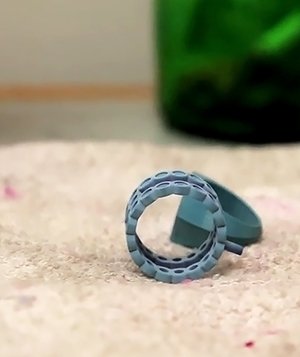 Specialty Wax
Specialty Wax
There are several different kinds of specialty wax, each dedicated for a specific purpose. Selecting the appropriate wax involves skilled knowledge, as each wax has a different hardness and melting point.
Carving wax is very hard and can be hand carved by a custom lost wax jewelry casting manufacturer with files, knives, scrapers, or power tools. The melting point of carving wax is very high due to its hardness and ranges between 225°F and 230° F.
Modeling wax, which softens very easily when exposed to the heat from your hands, is used for modeling sculptures and jewelry much the same way as work clay. There is a plethora of ingredients for producing modeling wax mixtures—beeswax, paraffin wax or microcrystalline wax, rosin, and filler. Due to such great variation, modeling waxes have broad melting points, ranging anywhere from 120° to 160° F.
Sticky wax starts as a hard wax, but when warmed becomes very tacky and melts completely when heated. Generally used to attach wax pieces, like sprues and gates, to the wax model, sticky wax provides temporary supports. These are then used by manufacturers who use lost wax casting for jewelry to stabilize pieces or create ‘trees’ that carry several molds of the same model, which are then removed after the piece has been cast in metal.
Patch wax and shaped wax are among the lesser known and used wax types. Patch wax is an extremely soft wax used to fill in small imperfections on a completed model, and shaped wax comes pre-made in different shapes and hardnesses.
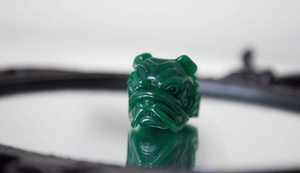 Direct Modeling
Direct Modeling
When lost wax investment casting manufacturers create a model by hand, a soft wax, like microcrystalline wax, can be applied using small, individual lumps. To warm the wax, place it near a light bulb, in warm water, in the sun, or use a torch to heat the surface and scrape off the warmed wax.
If you choose to work with melted wax, it can be painted onto a model or, once cooled slightly, this wax has the consistency of cake icing and can be applied with a spatula.
Wax Sheets
During the process of lost wax casting jewelry, a sculpture can be made using wax sheets that are assembled into a final product. They’re primarily used to simulate metal or to create a piece where uniform thickness is desired. This wax comes in several different thicknesses and you can carve directly onto it. If the sculpture is too big to support itself, wax sheets can also be used on the inside to ensure structural integrity.
Using a Core
A popular way of sculpting a piece from wax is with an investment core. The core, in the approximate shape of the finished work, can be made from clay or styrofoam and covered in layers of wax. You can paint the wax onto the core, dip the core repeatedly in wax, or apply wax sheets.
Once the wax on the outside is complete, the core can be melted with acetone and the wax shell is made into a mold and then cast in metal.
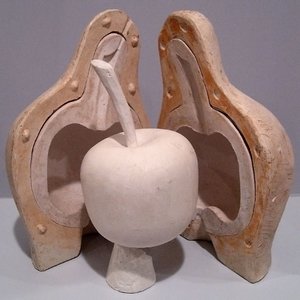 Casting Wax
Casting Wax
When casting wax, lost wax jewelry casting is the most common method used by custom manufacturers. An original piece is made in wax and then covered in plaster or clay. Once the clay or plaster hardens, it’s placed in an oven for 8-10 hours so the wax can be melted and funneled out through a small hole.
When the wax has burned away and the mold is hollow, precious metals can be poured inside to create a piece of jewelry or a sculpture.
3D Printing Wax
The tools for wax working vary depending on the method you prefer. When making lost wax casting jewelry models by hand, knives, chisels, and wire-end modeling tools are required, but if you choose to model in a CAD (computer aided design) program, your wax model can be made with a 3D printer.
Once the file you created is transferred to the 3D printer, the printer lays down very thin layers of wax to create your model. The process takes several hours and the model still needs to be refined after printing before it can be cast in metal.
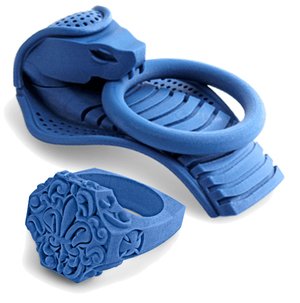 MKM Jewelry Can Help
MKM Jewelry Can Help
The professionals at MKM Jewelry have over 15 years of experience working with wax. We have the knowledge to help you create lost wax casting  jewelry, made to your specifications. With the ability to create a singular, unique piece or runs of over 1,000, we’ll take your vision and make it a reality. Visit us to see how MKM Jewelry uses cutting edge techniques to create art.       Â
Leave a Comment